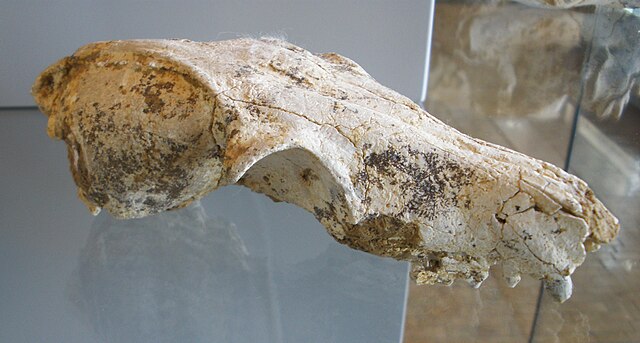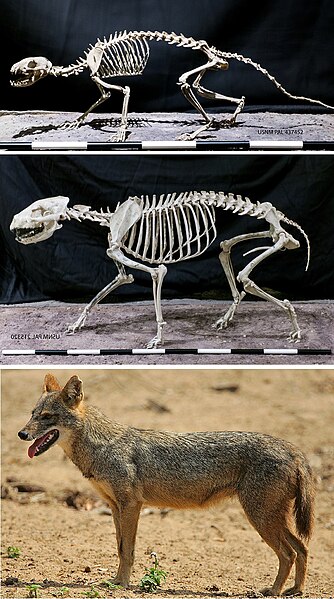Nyctereutes is a genus of canid which includes only two extant species, both known as raccoon dogs: the common raccoon dog and the Japanese raccoon dog. Nyctereutes first entered the fossil record 5.5 million years ago (Mya) in northern China. It was one of the earliest canines to arrive in the Old World. All but two species became extinct before the end of the Pleistocene. A study suggests that the evolution of Nyctereutes was influenced by environmental and climatic changes, such as the expansion and contraction of forests and the fluctuations of temperature and precipitation.
Nyctereutes megamastoides fossil skull
Image: Nyctereutes procyonoides viverrinus
Canidae is a biological family of dog-like carnivorans, colloquially referred to as dogs, and constitutes a clade. A member of this family is also called a canid. The family includes three subfamilies: the Caninae, the extinct Borophaginae and Hesperocyoninae. The Caninae are known as canines, and include domestic dogs, wolves, coyotes, foxes, jackals and other species.
Canidae
Representatives of three canid subfamilies: Hesperocyon (Hesperocyoninae), Aelurodon (Borophaginae) and Canis aureus (Caninae)
Skeleton of a black-backed jackal (Lupulella mesomelas) on display at the Museum of Osteology
Diagram of a wolf skull with key features labelled






